Playroom storage ideas – 10 child-friendly ways to keep control
We’re not saying they’ll solve all your tidying woes, but these playroom storage ideas will certainly stand you (and your little ones) in better stead
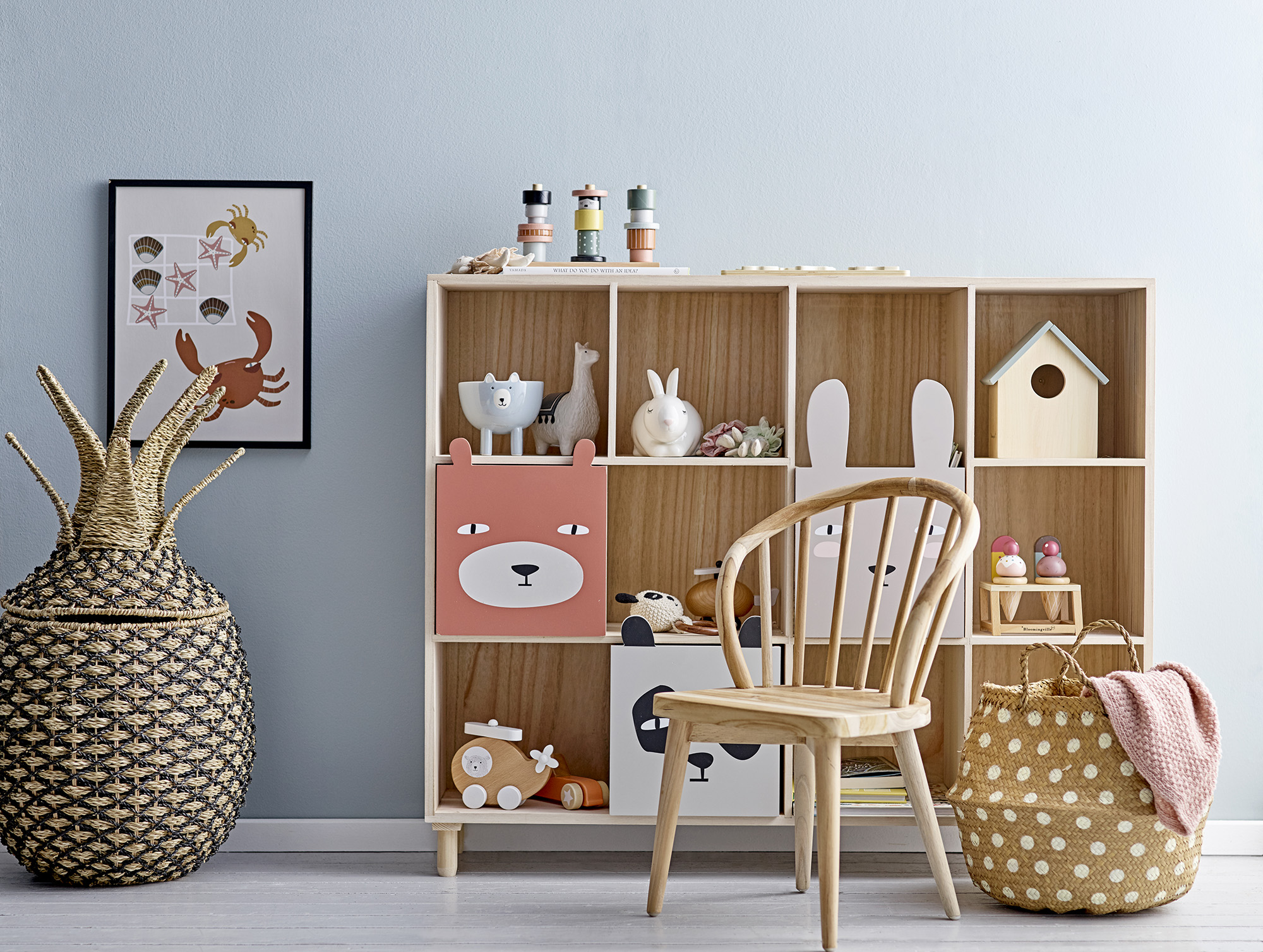
If you’ve ever stepped barefoot on a piece of Lego, you’ll know how important it is to get your playroom storage ideas spot on. Not just for your sake, but for your children, too; there’s nothing like clutter to cramp happy, creative play – that’s a fact.
The best playroom ideas are those that combine an inspirational aesthetic along with clever tidying solutions that enable not just ‘play’, but reading, crafting, wind-down time and eventually studying time, too. Accessible playroom storage ideas (that your child can ideally maintain on their own) are at the very heart of both.
If organizing your playroom has left you stumped for toy storage ideas, our team is here to help. Alongside advice from the experts, our personal parenting experience puts us in a strong position to a few practical tips of our own, as well as great toy storage ideas that have worked for us – and our own little ones.
Playroom storage ideas
As every parent knows, it’s all too easy to allow your whole home to turn into a playroom – kid’s ‘stuff’ seems to multiply overnight. So, when it comes to playroom storage ideas, more is more. Whether you’ve got a dedicated room for play or you’re looking for ways to integrate it into your communal living space, these inspirational ideas should help you to keep toys under control… we can’t promise the same for your children though!
1. Group toys into bins and baskets
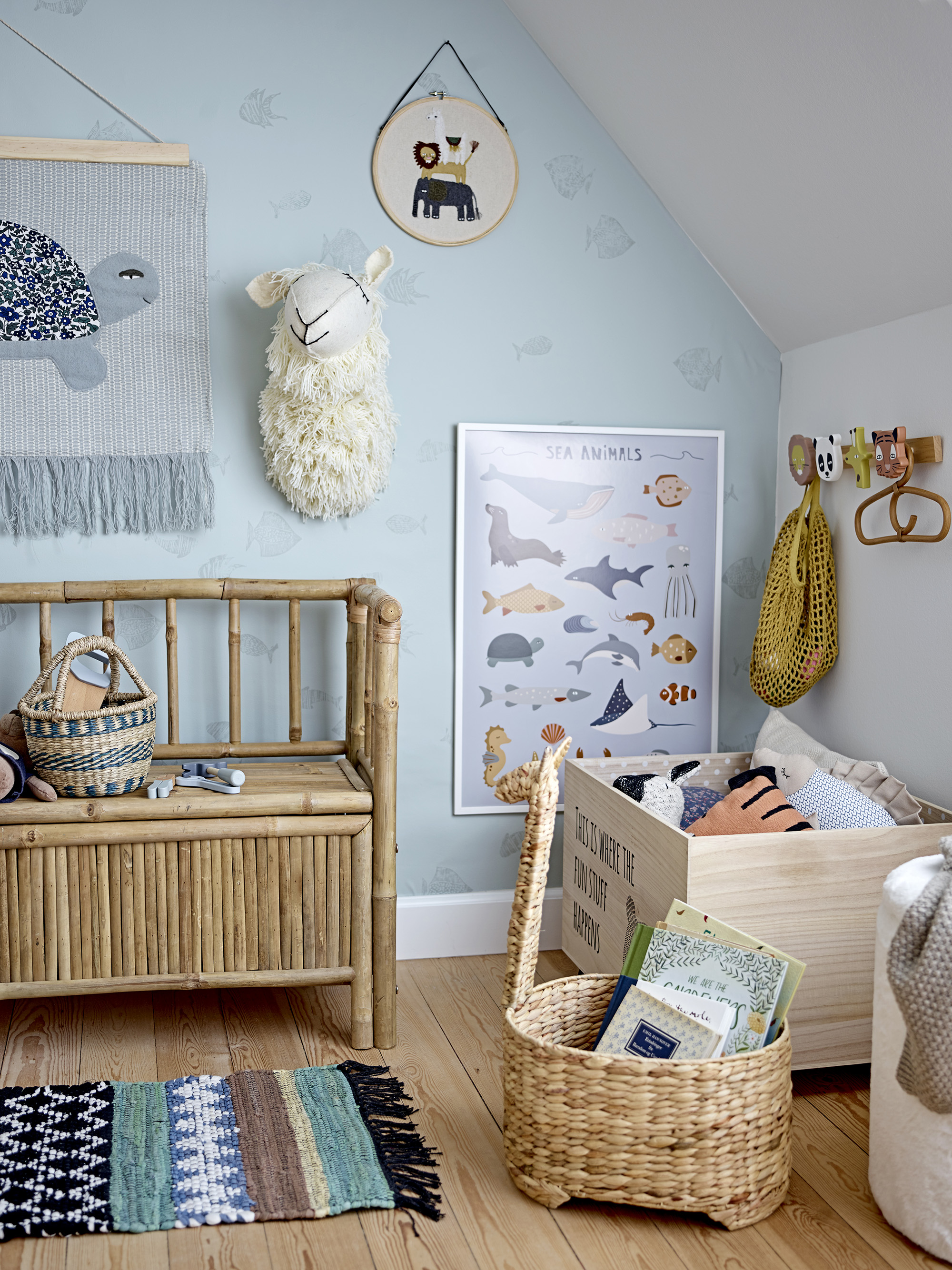
Organizing toys into categories is one of the best ways to help you strategize your playroom storage needs (and a great budget playroom idea if building out storage isn't part of your plans), but it won’t last long without an efficient storage system in place. If you’ve gone to the trouble of sorting your cars from your dinosaurs, your dolls from your pretend food, keep them separate in containers, baskets or, even better, stackable storage bins.
Emma George of Declutter with Emma advocates the importance of labeling to avoid any crossover. ‘Making it clear what goes where will be extremely helpful to your child when they’re looking for a specific toy, and for you when it comes to tidy-up time – the easier it is for them the more likely they are to help. If your kids can’t read yet, put your printer to work and create picture labels; a train on the train box for example’, she says.
2. Go bespoke with floor to ceiling storage

Utilizing the full vertical potential of your walls with floor-to-ceiling fitted cupboards is well worth the investment, particularly if you’re working with a smaller space. Your children may only be able to access the lower levels, but there are obvious benefits to stashing messy craft sets well out of reach! This is a great storage solution if you are looking at kids' room ideas, too.
‘Commissioning made-to-measure storage is the best way to make the most of any space. As it’s tailored to your home, it can be designed to work around any quirks, such as a sloping ceiling or an awkward corner’, says Irene Gunter, co-founder of Gunter & Co .
If you’re going down the bespoke route, consider incorporating other playroom elements to complement your storage system; carving out desk space amidst cabinets and shelving could make for a lovely little craft room idea, for example, or you could incorporate bench seating to create a cozy reading nook.
3. Hide playroom storage in multifunctional pieces
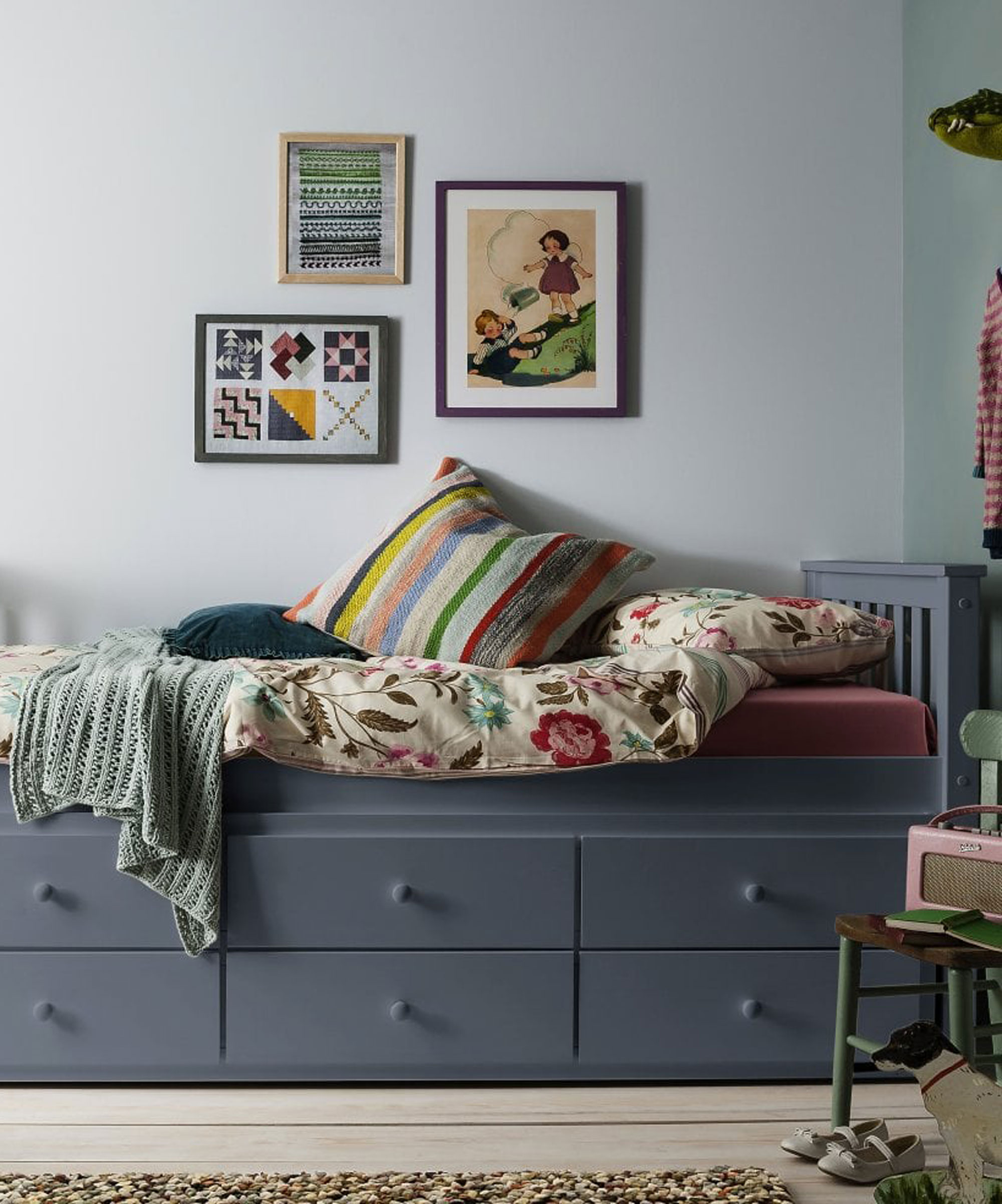
If you’re dealing with a tight space, or you’re combining a playroom with another area of the home – a snug or home office, for example – dual-purpose furniture is a good way to go, particularly pieces with built-in storage.
‘Cube storage which doubles as a seat, for example, or a desk – not only does this provide a helpful surface for books, gadgets or arts and crafts but the integrated drawer provides another more discreet space for small toys’, says Alex and Kris Tolofson, directors and founders of Noa and Nani.
Other examples include bedside tables with drawers, underbed storage ideas, storage stools or space under a desk. ‘For kids who share a room, you could use a piece of storage furniture to divide the space so there are no arguments over whose mess is whose!’ says professional organizer Vicky Silverthorn of You Need a Vicky.
4. Future proof with cubby-style storage

Cubby-style shelving units are particularly useful for playroom storage ideas as they can be so easily adapted as your children’s needs change. Open boxes that fit the cubbies are just as practical for toys as they are for storing sports equipment and school supplies – perfect for transforming a play zone into a study zone in years to come.
5. Store stuffed toys in style
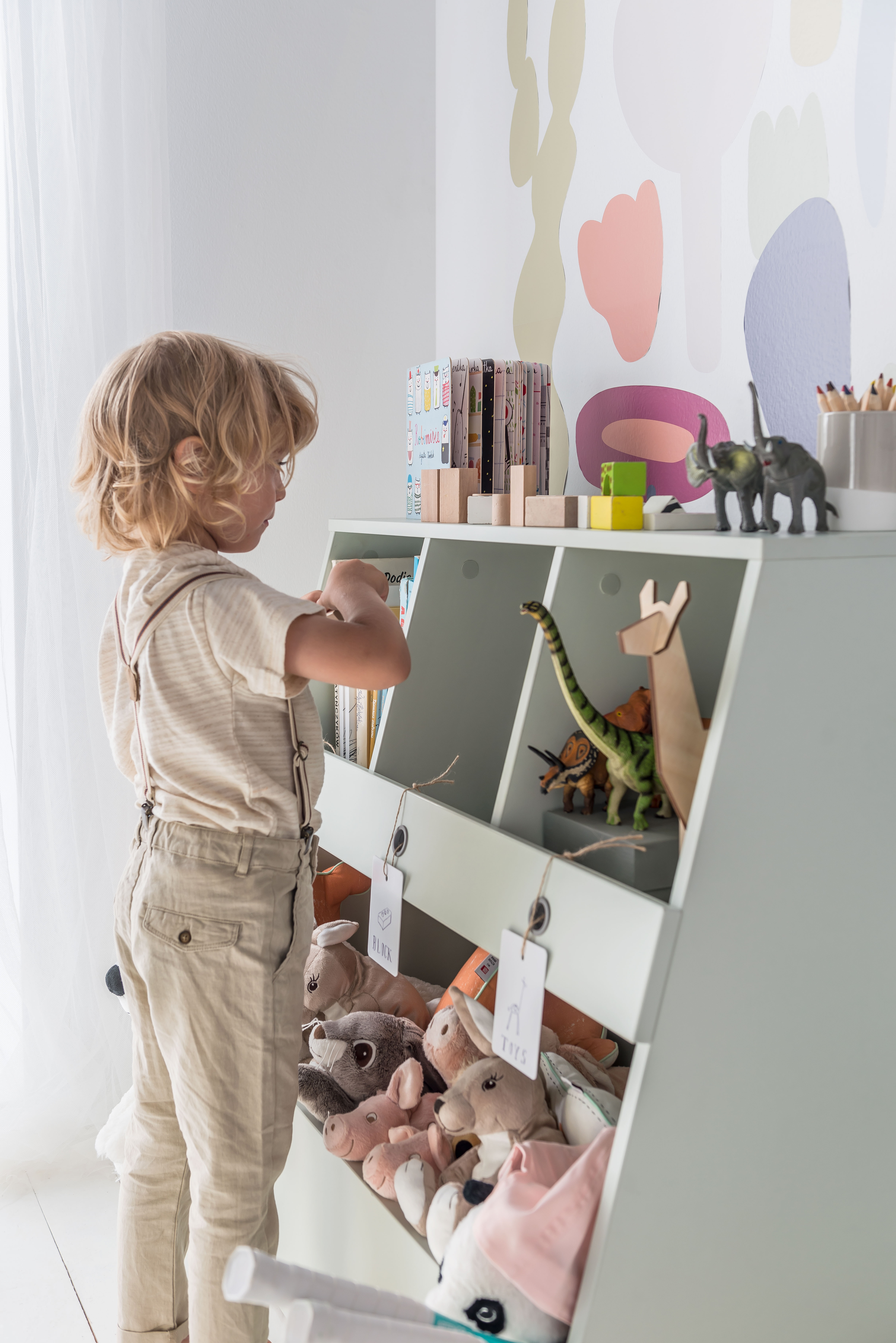
If your child’s at risk of losing their bed to their soft toy collection, it’s time to do something about it. Fabric floor baskets are a practical solution, but we personally favor open shelving, hanging baskets or wall hammocks for child appeal – plus they’re less likely to spill out onto the floor.
‘Kids get really excited to see their favorite cuddly toys together, which can bring comfort. Encouraging them to take pride in their possessions, showing them off to friends and family, will in turn encourage them to keep their room in order’, say celebrity home organizing experts, the Style Sisters.
6. Opt for open storage
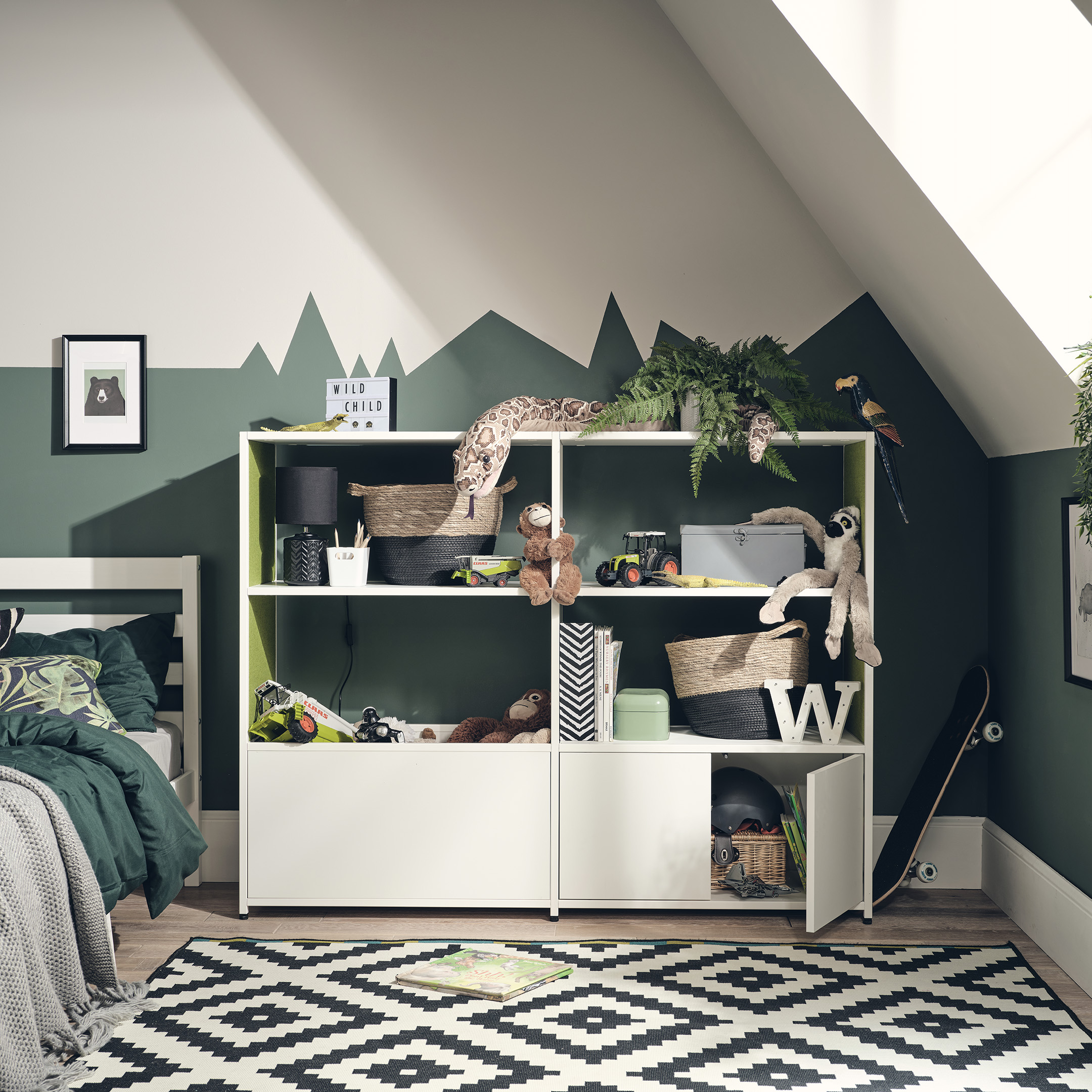
Children can be fickle when it comes to toys – if they can’t see it, it likely gets forgotten about. To ensure they’re enjoying varied play, opt for open playroom storage where you can. This enables them to access what they need quickly – and tidy up just as quickly, too, you’d hope.
Bins, baskets and containers are all useful, and can add to the room’s decor. While we’re all for a bit of color, a set of neutral baskets can be a great way to tone down bright shades and funky patterns, and bring a sense of calm to a space. They’re a great choice in communal rooms too as they blend in with your decor – consider leaving an empty basket in each room of the house that you and child can throw loose toys into throughout the day, then return them to their original homes before bed.
7. Use pegboards for craft supplies

If your children are old enough to have art supplies within easy reach, consider creating a central ‘creation station’ to keep all things ‘craft’ contained.
‘Kids have a tendency to pull everything out and mix it all together, and then it becomes too overwhelming to actually create anything. Think about age-appropriate activities and establish a simple storage system that allows children to easily set up and clean up after themselves – a portable caddy or trolley works well, but pegboards are particularly appealing, and look lovely on the wall too’, says professional organizer Sarah Grant, principal of Be.neat Studio.
Organize your supplies into hanging storage (baskets, bins, rods and pegs can all be attached with hooks) according to activity, then simply swap them in and out as necessary – it’s easy enough to remove some, or even the whole lot, if there’s younger children playing in the room at any point.
8. Let toys double up as decoration

Admittedly not always the case (unless brightly colored plastic is your thing), but certain toys can look beautifully stylish. It seems a shame to hide them away; instead, try integrating them into your playroom storage scheme by positioning them on exposed shelving, or on top of a dresser.
This also has the added benefit of keeping toys within sight, too, so children are more likely to play with them. If they’re moved during the day, take the time to reposition them mindfully to avoid the room looking untidy.
9. Keep books on show
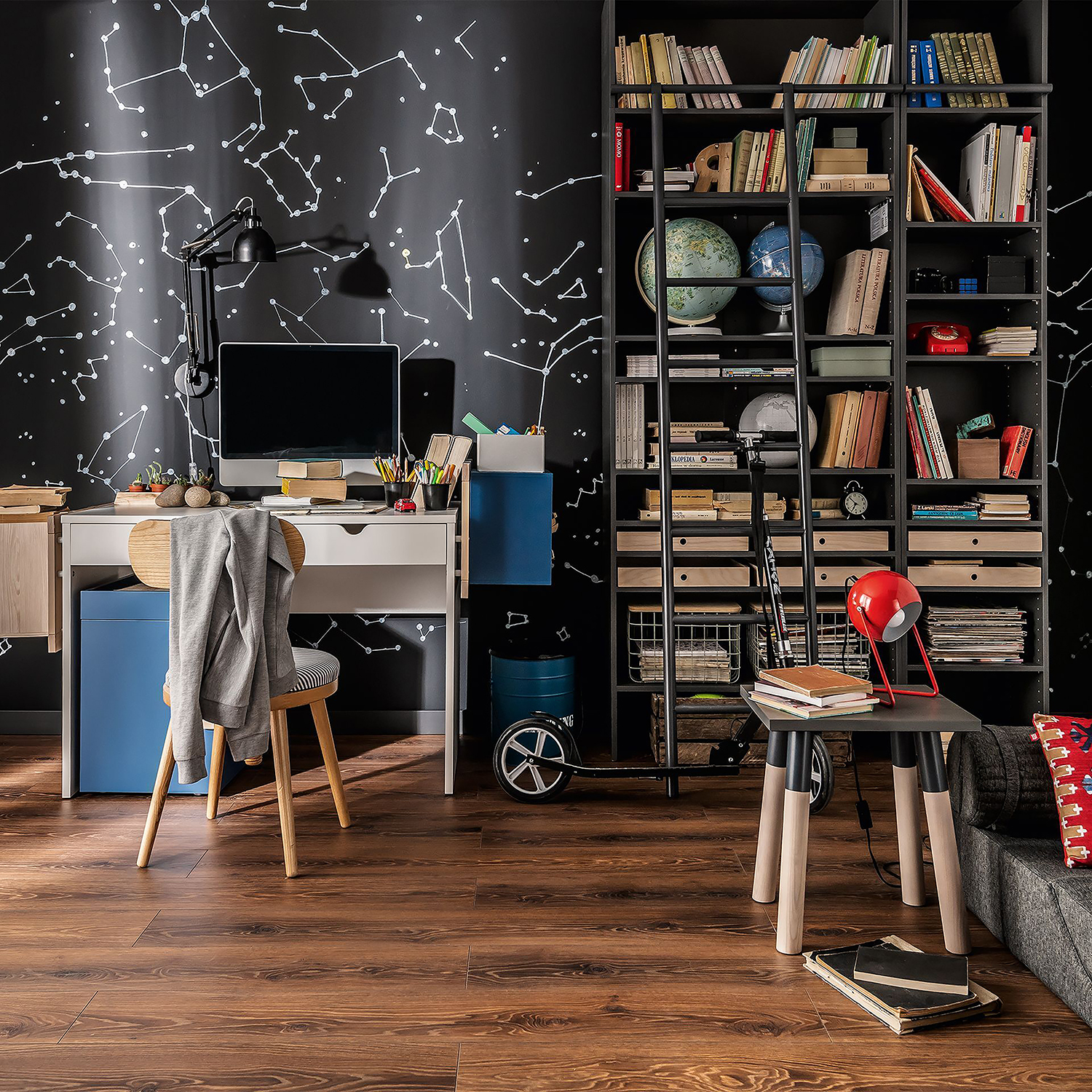
Including bookshelf ideas into your plans for playroom storage is a must.
‘Adding front-facing bookshelves to your playroom can look tidier than traditional bookcases and be much easier for kids to use – as long as they’re the appropriate height. What’s more, seeing images instead of book spines can encourage children to pick up a book and read’, says Laura Rich, Product Developer at Furniturebox.
10. Store sets in zip wallets or clear drawers
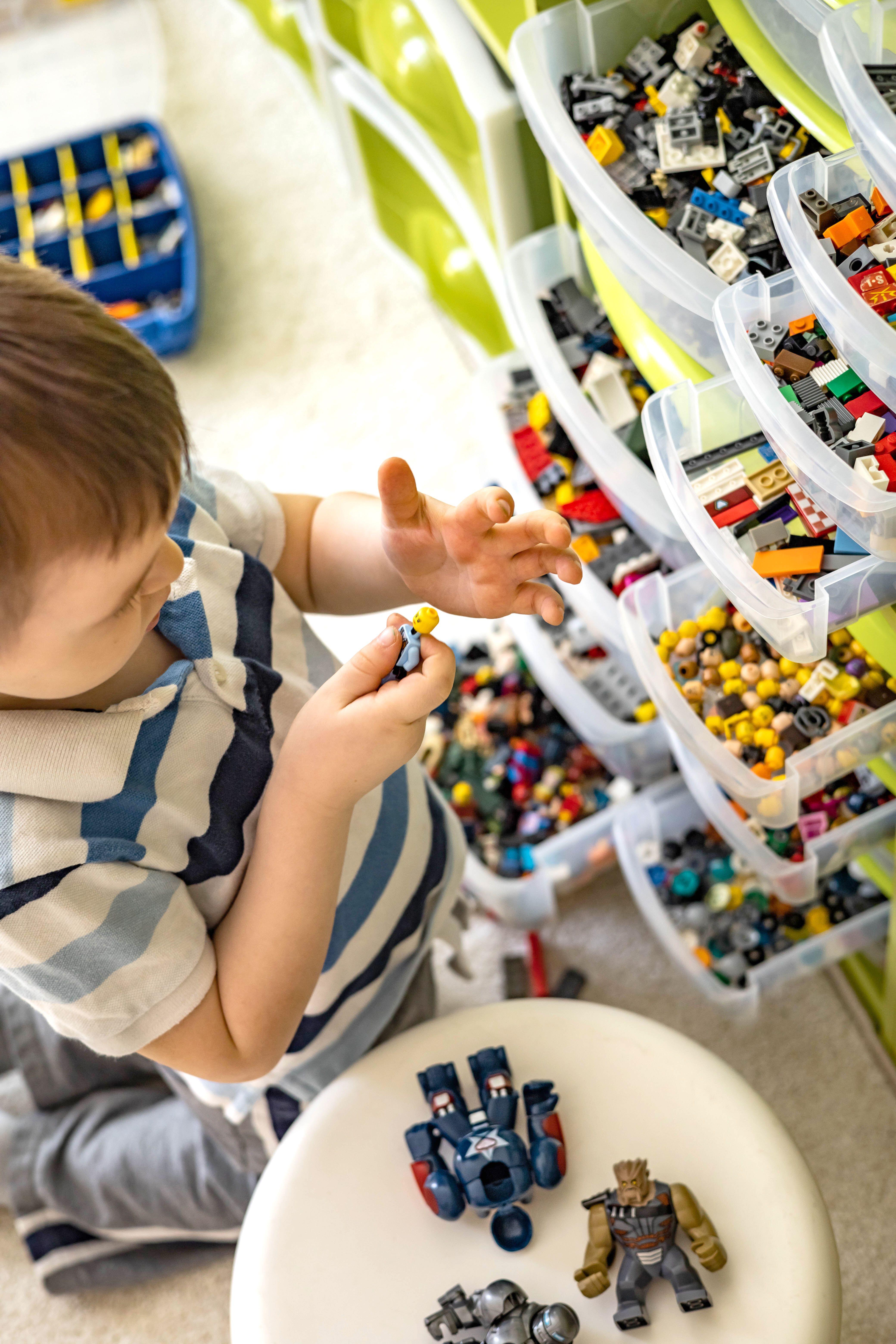
When it comes to smaller toys such as Lego, jigsaws, Playmobil, or any kind of ‘set’, Jacqueline McLeod, APDO’s Communications Director and founder of Bancrofts Organisation Services recommends using zip wallets. ‘They’re fantastic for teaching children to organize their toys properly as they come in different colors, so they can easily identify what goes where at tidy up time’, she says.
They’re a great space-saving option as you can slot several together into a drawer, onto a shelf or within a cubby hole. Emma George suggests implementing the file and fold method, more commonly associated with organizing clothes: ‘Place them vertically, a bit like how you would keep papers in a filing cabinet’, she says.
Otherwise, be inspired by tool storage, which often comes with clear drawers for displaying different types of screws, nails and nuts, making access neat and easy.
How do you maximize space in a playroom?
The best way to maximize space in a playroom is to plan plenty of playroom storage ideas into your layout. This allows for less sightly items to be stored away behind closed doors, leaving the space feeling bright, spacious and tidy – a much more appealing place to play in.
Floor space is a premium play area, so leave this as free as possible and turn your attention to vertical storage options instead. Stackable storage boxes and cubby-style units are great for keeping toys contained. You can also wall mount front-facing shelves for books, peg boards for pens and craft supplies, hooks and rails for dressing up clothes… the list goes on.
It may sound counterintuitive, but try not to fill the room with toys – there’s nothing like clutter to make a room feel smaller than it is. Rotating toys is a great way of freeing up space, plus children are more likely to engage when there’s fewer toys on offer, so it's win-win. Start with two or three boxes per child and fill each with a mix of toy types, then rotate on a weekly, monthly or tri-monthly basis.
How do you store toys in a playroom?
Playroom toy storage may feel like an impossible task to keep on top of, but it’s key to ensuring a happy and productive play time for your little ones. A good declutter is a good place to start. Recycle or get rid of anything that’s broken or no longer serves a purpose. When organizing toys, limit to just a few of each type and donate any extras. As you work through, start grouping items into general categories –’ dolls’, 'vehicles', ‘books’, ‘craft supplies’ and so on.
Next, think about how your children use the playroom and position items accordingly. Keep categories together where you can to create zones – playing, reading, crafting, dressing up and so on. This makes it easier for children to move around the room and find what they’re looking for.
Reserve lower-level storage for favorite toys and store others that need adult supervision – messy craft sets, tricky puzzles etc – out of reach. Opt for open, clear storage and label every container so your child can find what they need, quickly… and just as quickly put things away again once they’re done!
Sign up to the Homes & Gardens newsletter
Design expertise in your inbox – from inspiring decorating ideas and beautiful celebrity homes to practical gardening advice and shopping round-ups.
For 10 years, Tara King worked as a Content Editor in the magazine industry, before leaving to become freelance, covering interior design, wellbeing, craft and homemaking. As well as writing for Ideal Home, Style at Home, Country Homes & Interiors, Tara’s keen eye for styling combined with a passion for creating a happy – and functional – family home has led to a series of organization and cleaning features for H&G.
-
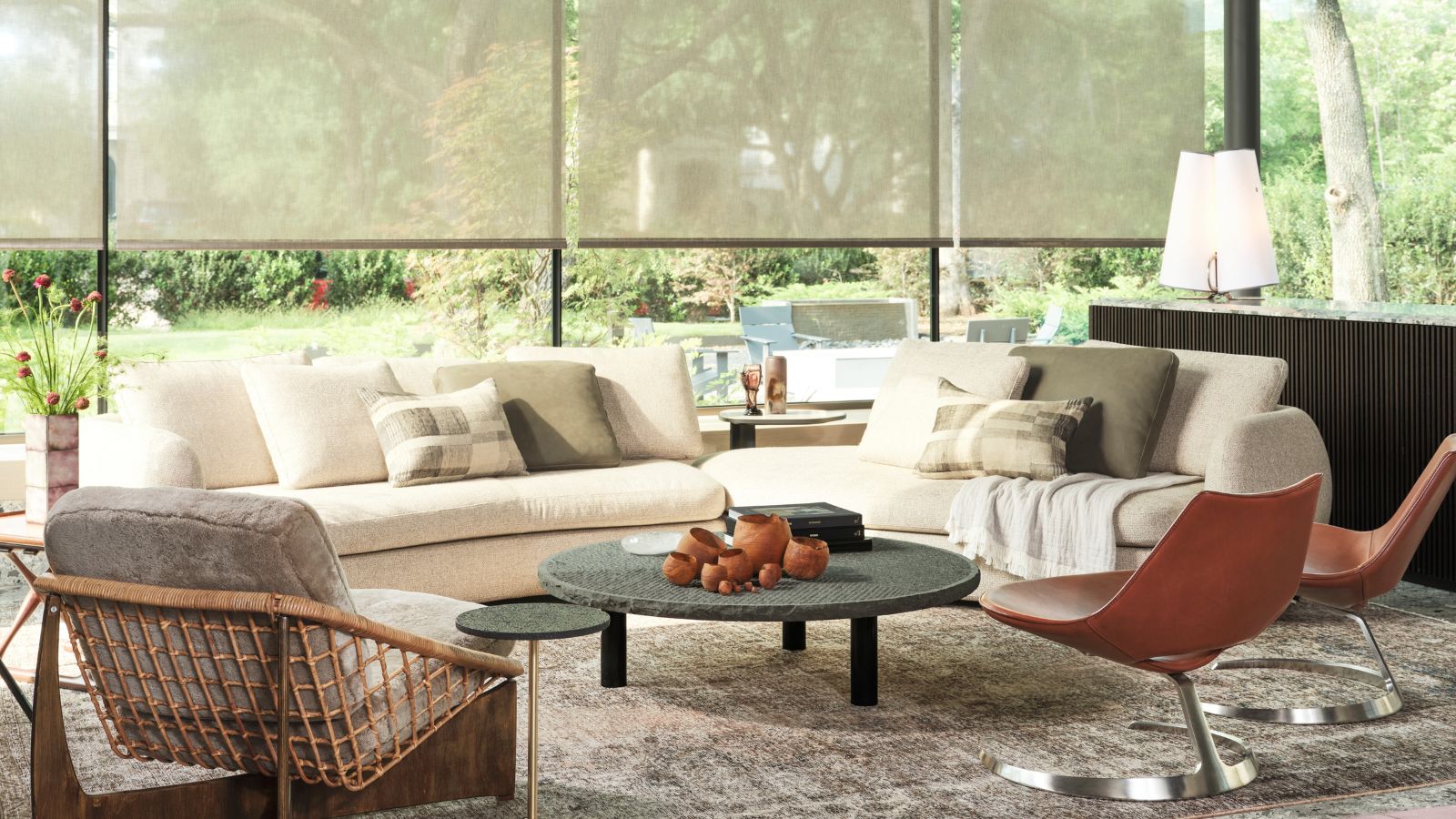 Thoughtful modernism – how one Dallas home makes bold contemporary design feel warm, welcoming, and comfortable
Thoughtful modernism – how one Dallas home makes bold contemporary design feel warm, welcoming, and comfortableWith its mix of textural finishes and carefully curated furnishings, this modernist home is a refreshing retreat
By Karen Darlow Published
-
 'Wick away the ick' – 6 things people with clean laundry rooms always do to make this hardworking space shine
'Wick away the ick' – 6 things people with clean laundry rooms always do to make this hardworking space shineThese tips on how to clean your laundry room will banish grime
By Seraphina Di Mizzurati Published